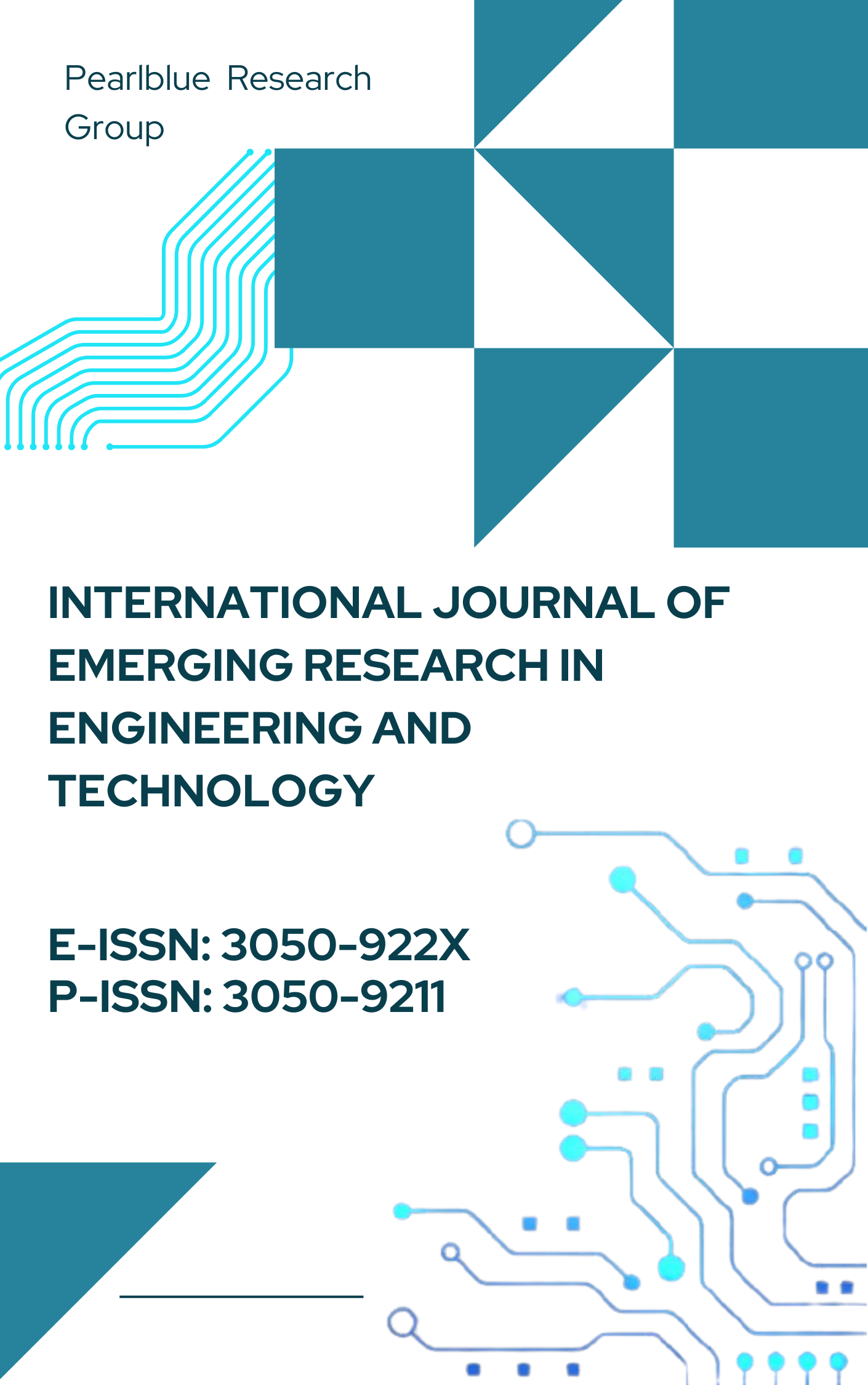Designing for Defense: How We Embedded Security Principles into Cloud-Native Web Application Architectures
DOI:
https://doi.org/10.63282/3050-922X.IJERET-V2I4P104Keywords:
Cloud-Native, Security Architecture, Devsecops, Microservices, Zero Trust, Secure Web Apps, Container Security, Kubernetes, Shift-Left Security, Identity And Access Management (IAM), TLS, Encryption, CI/CD Pipeline Security, Threat Modeling, Runtime Protection, Least Privilege, Service Mesh, Policy Enforcement, Secure Coding Practices, Vulnerability Management, Infrastructure As Code (IAC), Network Segmentation, Application Firewall, Secrets Management, Automated Compliance, Role-Based Access Control (RBAC), ObservabilityAbstract
As cloud-native development becomes the fundamental basis for present-day digital services, the securing of these evolving, distributed setups has been elevated to a topmost concern for developers and architects alike. In the following essay, we look into why the more secure your cloud-native web applications are, the more urgent and important it is. We suggest the major architectural tactics to be used for the creation of applications that are secure by default. These include zero-trust network design, policy-driven access controls, container and workload isolation, API security measures, and automated compliance enforcement. We provide a collection of practical design principles that take into account the specifics of each different cloud-native environment, based on the real-life implementation experiences from the industry. In order to make these ideas more concrete, we give a detailed description of a large-scale deployment that presents how the security aspect was introduced in every stage, from infrastructure provisioning to application runtime. Through the security lens, every single layer of the stack, from threat modeling, secure CI/CD pipelines, and runtime anomaly detection to identity-aware traffic segmentation, is viewed. The result: strengthened threat resilience, reduced attack surface, and greater compliance were the benefits derived—all while keeping agility and developer velocity intact. For those that are in the field, this piece provides a working scheme that can be used to make cloud-native applications that are not only designed but are secure. The example is of use to those who are giving technical guidance as well as those who have implementation solutions in mind. The advice and cases submitted will help them to establish trustful applications and systems most economically and effectively
References
[1] Torkura, Kennedy A., et al. "Leveraging cloud native design patterns for security-as-a-service applications." 2017 IEEE International Conference on Smart Cloud (SmartCloud). IEEE, 2017.
[2] Gilbert, John. Cloud Native Development Patterns and Best Practices: Practical architectural patterns for building modern, distributed cloud-native systems. Packt Publishing Ltd, 2018.
[3] Laszewski, Tom, et al. Cloud Native Architectures: Design high-availability and cost-effective applications for the cloud. Packt Publishing Ltd, 2018.
[4] Davis, Cornelia. Cloud Native Patterns: Designing Change-Tolerant Software. Simon and Schuster, 2019.
[5] Anusha Atluri. “Data Migration in Oracle HCM: Overcoming Challenges and Ensuring Seamless Transitions”. JOURNAL OF RECENT TRENDS IN COMPUTER SCIENCE AND ENGINEERING ( JRTCSE), vol. 7, no. 1, Apr. 2019, pp. 66–80
[6] Garrison, Justin, and Kris Nova. Cloud native infrastructure: patterns for scalable infrastructure and applications in a dynamic environment. " O'Reilly Media, Inc.", 2017
[7] Mammo, Kidus Wendimagegn. rials: Cloud-Native Security. Diss. Aalto University, 2020.
[8] Ali Asghar Mehdi Syed. “High Availability Storage Systems in Virtualized Environments: Performance Benchmarking of Modern Storage Solutions”. JOURNAL OF RECENT TRENDS IN COMPUTER SCIENCE AND ENGINEERING ( JRTCSE), vol. 9, no. 1, Apr. 2021, pp. 39-55
[9] Sangeeta Anand, and Sumeet Sharma. “Big Data Security Challenges in Government-Sponsored Health Programs: A Case Study of CHIP”. American Journal of Data Science and Artificial Intelligence Innovations, vol. 1, Apr. 2021, pp. 327-49
[10] Sethi, Manish. Cloud Native Python. Packt Publishing Ltd, 2017.
[11] 11. Paidy, Pavan. “Post-SolarWinds Breach: Securing the Software Supply Chain”. Newark Journal of Human-Centric AI and Robotics Interaction, vol. 1, June 2021, pp. 153-74
[12] Keery, Sean, Clive Harber, and Marcus Young. Implementing Cloud Design Patterns for AWS: Solutions and design ideas for solving system design problems. Packt Publishing Ltd, 2019.
[13] Yasodhara Varma Rangineeni, and Manivannan Kothandaraman. “Automating and Scaling ML Workflows for Large Scale Machine Learning Models”. JOURNAL OF RECENT TRENDS IN COMPUTER SCIENCE AND ENGINEERING ( JRTCSE), vol. 6, no. 1, May 2018, pp. 28-41
[14] Mammo, Kidus. "Online Platform for Interactive Tutorials: Cloud-Native Security." (2020).
[15] Veluru, Sai Prasad, and Mohan Krishna Manchala. “Federated AI on Kubernetes: Orchestrating Secure and Scalable Machine Learning Pipelines”. Essex Journal of AI Ethics and Responsible Innovation, vol. 1, Mar. 2021, pp. 288-12
[16] Kumar, Tambi Varun. "Layered App Security Architecture for Protecting Sensitive Data." (2016).
[17] Anusha Atluri. “The Revolutionizing Employee Experience: Leveraging Oracle HCM for Self-Service HR”. JOURNAL OF RECENT TRENDS IN COMPUTER SCIENCE AND ENGINEERING ( JRTCSE), vol. 7, no. 2, Dec. 2019, pp. 77-90
[18] Kothawade, Prasad, and Partha Sarathi Bhowmick. "Cloud Security: Penetration Testing of Application in Micro-service architecture and Vulnerability Assessment." (2019).
[19] Talakola, Swetha. “Automation Best Practices for Microsoft Power BI Projects”. American Journal of Autonomous Systems and Robotics Engineering, vol. 1, May 2021, pp. 426-48
[20] Ingeno, Joseph. Software Architect’s Handbook: Become a successful software architect by implementing effective architecture concepts. Packt Publishing Ltd, 2018.
[21] Veluru, Sai Prasad. “AI-Driven Data Pipelines: Automating ETL Workflows With Kubernetes”. American Journal of Autonomous Systems and Robotics Engineering, vol. 1, Jan. 2021, pp. 449-73
[22] Emily Harris, and Bennett Oliver. "Event-Driven Architectures in Modern Systems: Designing Scalable, Resilient, and Real-Time Solutions." International Journal of Trend in Scientific Research and Development 4.6 (2020): 1958-1976.
[23] Paidy, Pavan. “Zero Trust in Cloud Environments: Enforcing Identity and Access Control”. American Journal of Autonomous Systems and Robotics Engineering, vol. 1, Apr. 2021, pp. 474-97
[24] Langen, S. F. An architectural design for LAN-based web applications in a military mission-and safety-critical context. MS thesis. University of Twente, 2016.
[25] Hoffman, Kevin. "Programming WebAssembly with Rust: unified development for web, mobile, and embedded applications." (2019): 1-220.



